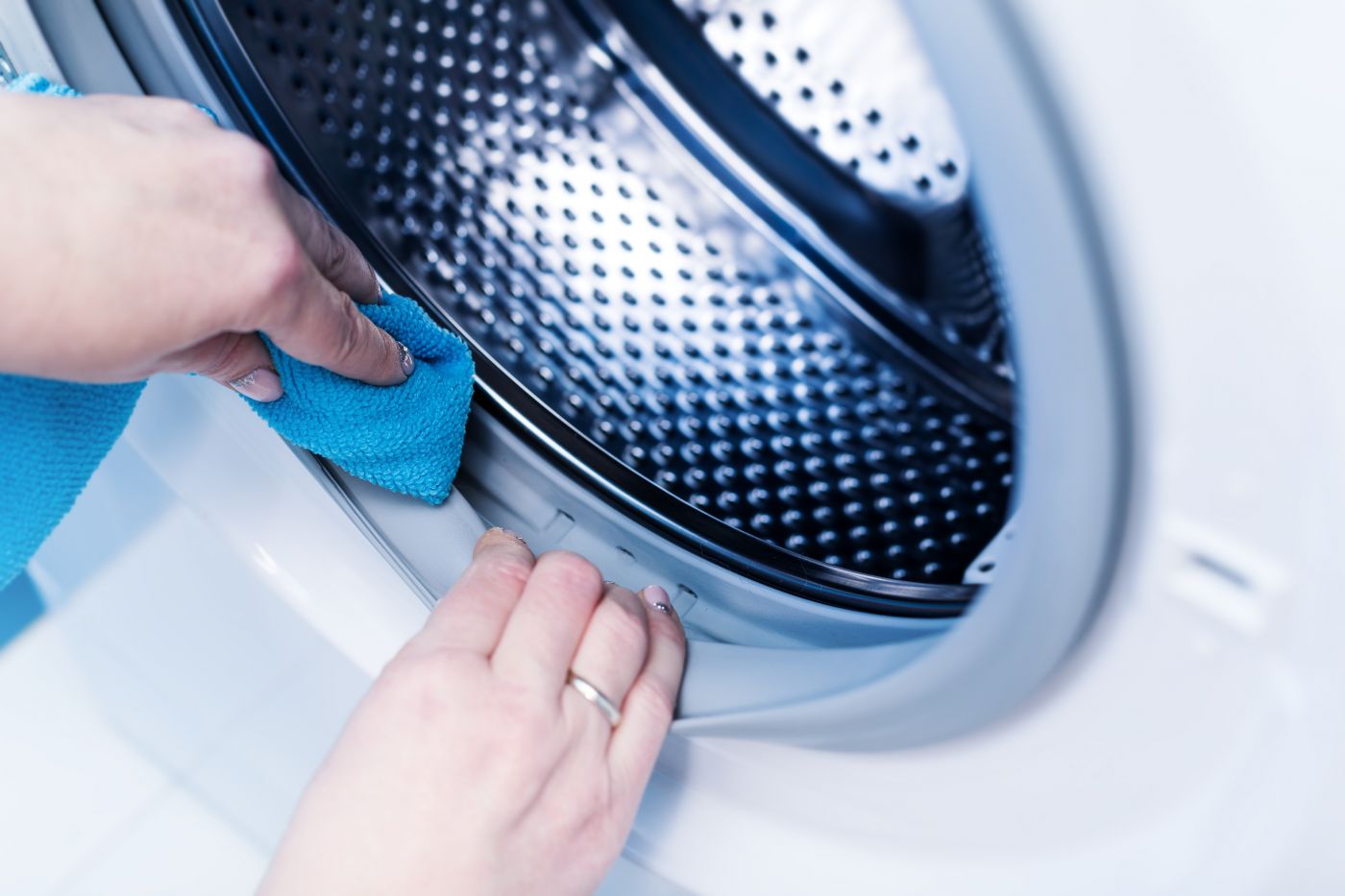Key points
- Washing machines can get dirty due to a build-up of dead skin, dirt and lint.
- It is recommended to clean out your washing machine once a month.
- You can use baking soda and vinegar or purchase a specialised washing machine cleaning product.
Washing machines are one of the most overworked appliances in the home, and while they’re built to last, there are things you should be doing to help prolong their life. Namely, cleaning them regularly. There are a number of washing machine cleaning products available at supermarkets but if you’re after a more natural remedy you can use some common household items to clean it. Read on to find out how to clean your washing machine.
On this page:
- How do you clean your washing machine?
- What causes a washing machine to get dirty?
- How to clean your washing machine with vinegar and baking soda
- Washing machine cleaning tips
- How to clean a top-loader washing machine
- How to clean a front-loader washing machine
- How often should I clean my washing machine?
How do you clean your washing machine?
Using a cleaning product specifically designed to clean washing machines or using common household cleaning products will be equally effective in cleaning your machine. The trade-off is that specific products could be more expensive and potentially contain stronger chemicals, while a homemade solution is possibly more natural but also more time-consuming.
How much does washing machine cleaner cost?
Store-bought washing machine cleaners range from as little as $4 up to $20 depending on the brand and the size of the product. A cheaper option is usually the at-home method as it uses items you most likely already have in the cupboard.
What causes a washing machine to get dirty?
There are a number of reasons your washing machine can get dirty. First and foremost, the build-up of dead skin, dirt and lint from your clothes can cause your washing machine pipes to become clogged and the drum dirty. Secondly, a blockage in the pipe where water is drained means dirty water could sit in your washing machine and cause mould and a musty smell to develop.
While your main concern would be the drum being dirty, the seal in your washing machine door can also gather grime. Any debris from clothing tends to get caught in between the seals, and if your washing machine door is left closed for too long, mould can build up due to the trapped moisture.
How to clean your washing machine with vinegar and baking soda
If you’re looking for an eco-friendly at-home solution for washing machine cleaning, this is for you. You likely already have the ingredients to create natural cleaning agents in your home: baking soda and vinegar. You can use the vinegar alone for a surface clean, then add the baking soda to the drum to break down any remaining build-up of dirt.
Washing machine cleaning tips
There are plenty of small actions you can take to extend both the time between cleaning your washing machine and the longevity of your machine. Here are some basic actions you can take after every wash:
- Leave the door open
- Wipe down the rubber seals
- Don’t use too much detergent
- Wipe down the detergent dispenser or agitator after washing
Replacing the door and pipe seals if they become damaged will also help keep your washing machine in tip-top shape for longer.
How to clean a top-loader washing machine
Top-loader washing machines take a little bit longer and can be fiddlier to clean than front-loader machines because they require a few additional steps. Follow these steps when using a home-remedy for cleaning but read the instructions when using a store-bought cleaner.
- Step 1− Empty your washing machine and allow the interior to dry.
- Step 2− Set the washer on the hottest and largest load setting, then add four cups of white vinegar to the wash cycle in the detergent dispenser. Pause your washer after 15 minutes and let the mixture sit in the drum for about an hour.
- Step 3− Use this time to spray the outside of the machine with vinegar and wipe it with a damp cloth, and scrub the detergent dispenser with an old toothbrush.
- Step 4− Once the hour is up, continue the wash cycle as normal.
- Step 5− Repeat the cycle and this time, add one cup of baking soda to the drum.
- Step 6− Once the cycle is complete, wipe down the lid top with a damp cloth.
Advertisement
How to clean a front-loader washing machine
Front loaders are susceptible to a build-up of dirt and mould in the door seal so always take a little extra time to clean those harder-to-reach areas. If you’re using a store-bought cleaner follow the instructions. For a homemade cleaner, follow these steps as a guide.
- Step 1− Empty your washing machine and allow the interior to dry.
- Step 2− Wipe up any grime on the rubber gasket using a damp cloth and a little white vinegar.
- Step 3− Add two cups of white vinegar to the detergent dispenser.
- Step 4− Run a complete washing cycle with hot water and on the largest load setting.
- Step 5− Repeat the cycle and this time, add ½ cup of baking soda to the drum before turning it on.
- Step 6− Once the cycle is complete, wipe the drum and the outside of your machine with a damp cloth and vinegar.
Front loaders are particularly susceptible to suds building up, and with all the grime being dislodged, it may suds up quite a bit, so make sure to keep an eye on it. For fabric softener dispensers, most of the time they are able to be removed – this way you can place them in the dishwasher for cleaning. For front loaders, also pay attention to the filters, and clean them as necessary.
How to clean a washing machine seal
Cleaning a washing machine seal is a pretty simple task. One way is to use a little bit of vinegar or washing machine cleaner on a damp cloth and wipe the insides of the seal. Another temporary cleaning method is to use some anti-bacterial wipes and quickly wipe it over to get all the muck off, then leave the door open for it to air out and dry.
Looking for more guides on washing machines?
- What are the best washing machines for saving water?
- Are washing machines with agitators good or bad?
- Washing machines with steam programs
- Smart washing machines buying guide
How often should I clean my washing machine?
If you use your washing machine daily, you should deep clean it once a month to avoid any long term damage to clothes or your machine. If you use your machine every few days you could possibly stretch it to once every two months with some smaller maintenance cleans in between deep cleaning. By maintaining your washing machine cleaning schedule you can prolong the life of your washing machine and have fresher clothes after each wash.
Compare Front Load Washing Machines





Share this article